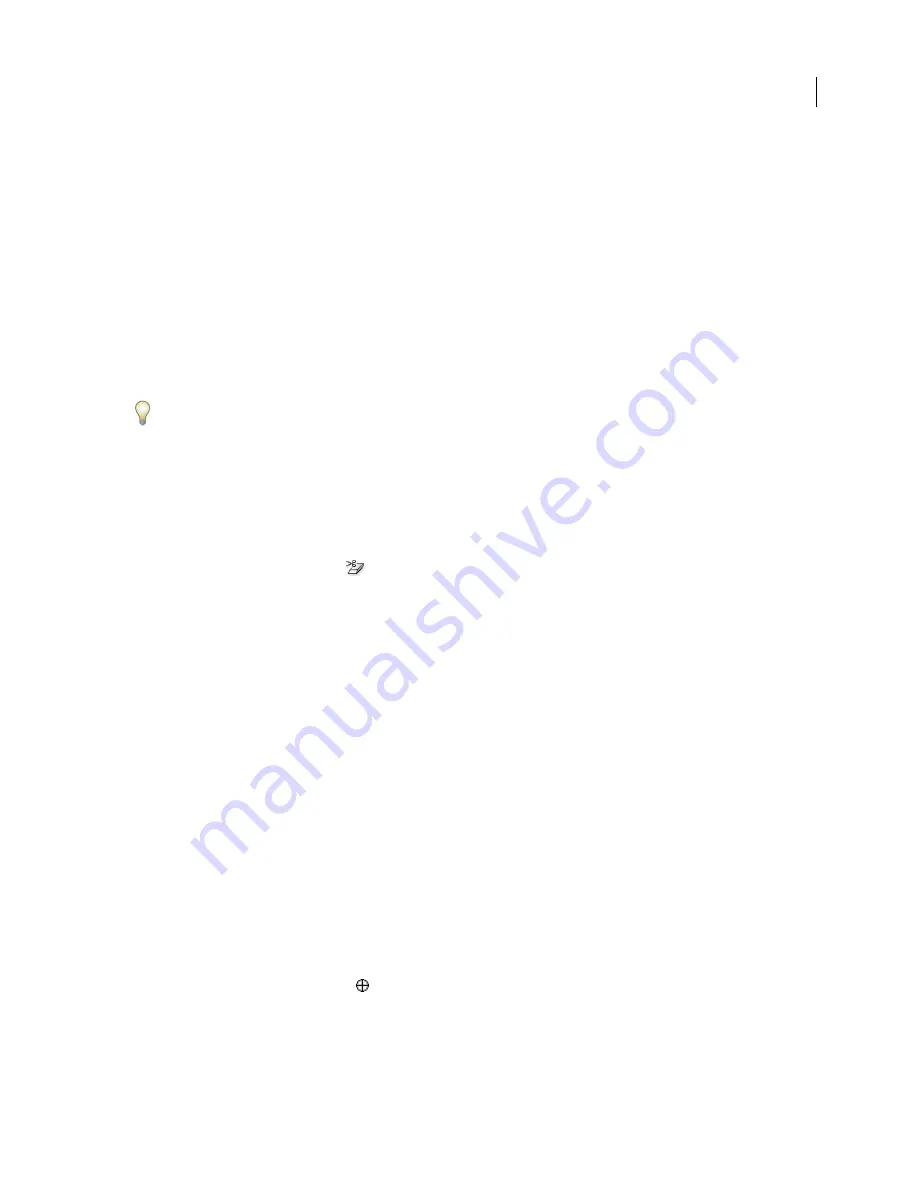
PHOTOSHOP CS3
User Guide
329
•
Select Contiguous to erase only pixels contiguous to the one you click, or deselect to erase all similar pixels in the
image.
•
Select Sample All Layers to sample the erased color using combined data from all visible layers.
•
Specify an opacity to define the strength of the erasure. An opacity of 100% erases pixels completely. A lower
opacity erases pixels partially.
3
Click in the part of the layer you want to erase.
Change pixels to transparent with the Background Eraser tool
The Background Eraser tool erases pixels on a layer to transparency as you drag; this allows you to erase the
background while maintaining the edges of an object in the foreground. By specifying different sampling and
tolerance options, you can control the range of the transparency and the sharpness of the boundaries.
If you want to erase the background of an object with intricate or wispy edges, use the Extract command.
The background eraser samples the color in the center of the brush, also called the hot spot, and deletes that color
wherever it appears inside the brush. It also performs color extraction at the edges of any foreground objects, so that
color halos are not visible if the foreground object is later pasted into another image.
Note:
The background eraser overrides the lock transparency setting of a layer.
1
In the Layers palette, select the layer containing the areas you want to erase.
2
Select the Background Eraser tool
.
3
Click the brush sample in the options bar, and set brush options in the pop-up palette:
•
Choose settings for the Diameter, Hardness, Spacing, Angle, and Roundness options (see “Brush tip shape
options” on page 334).
•
If you’re using a pressure-sensitive digitizing tablet, choose options from the Size and Tolerance menus to vary the
size and tolerance of the background eraser over the course of a stroke. Choose Pen Pressure to base the variation
on the pen pressure. Choose Stylus Wheel to base the variation on the position of the pen thumbwheel. Choose
Off if you don’t want to vary the size or tolerance.
4
Do the following in the options bar:
•
Choose a Limits mode for erasing: Discontiguous to erase the sampled color wherever it occurs under the brush;
Contiguous to erase areas that contain the sampled color and are connected to one another; and Find Edges to
erase connected areas containing the sampled color while better preserving the sharpness of shape edges.
•
For Tolerance, enter a value or drag the slider. A low tolerance limits erasure to areas that are very similar to the
sampled color. A high tolerance erases a broader range of colors.
•
Select Protect Foreground Color to prevent the erasure of areas that match the foreground color in the toolbox.
•
Choose a Sampling option: Continuous to sample colors continuously as you drag; Once to erase only areas
containing the color you first click; and Background Swatch to erase only areas containing the current background
color.
5
Drag through the area you want to erase. The Background Eraser tool pointer appears as a brush shape with a
cross hair indicating the tool’s hot spot
.






























